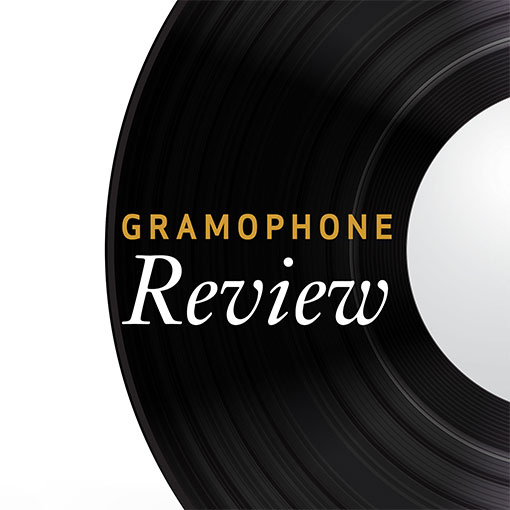Schubert: Music for piano trio
View record and artist detailsRecord and Artist Details
Composer or Director: Franz Schubert
Label: Philips Classics
Magazine Review Date: 5/1986
Media Format: CD or Download
Media Runtime: 0
Mastering:
DDD
Catalogue Number: 412 620-2PH2

Tracks:
| Composition | Artist Credit |
|---|---|
| Piano Trio No. 1 |
Franz Schubert, Composer
Beaux Arts Trio Franz Schubert, Composer |
| Piano Trio No. 2 |
Franz Schubert, Composer
Beaux Arts Trio Franz Schubert, Composer |
| Notturno |
Franz Schubert, Composer
Beaux Arts Trio Franz Schubert, Composer |
| Piano Trio |
Franz Schubert, Composer
Beaux Arts Trio Franz Schubert, Composer |
Composer or Director: Franz Schubert
Label: Philips Classics
Magazine Review Date: 5/1986
Media Format: Vinyl
Media Runtime: 0
Mastering:
DDD
Catalogue Number: 412 620-1PH2

Tracks:
| Composition | Artist Credit |
|---|---|
| Piano Trio No. 1 |
Franz Schubert, Composer
Beaux Arts Trio Franz Schubert, Composer |
| Piano Trio No. 2 |
Franz Schubert, Composer
Beaux Arts Trio Franz Schubert, Composer |
| Notturno |
Franz Schubert, Composer
Beaux Arts Trio Franz Schubert, Composer |
| Piano Trio |
Franz Schubert, Composer
Beaux Arts Trio Franz Schubert, Composer |
Composer or Director: Franz Schubert
Label: Philips Classics
Magazine Review Date: 5/1986
Media Format: Cassette
Media Runtime: 0
Mastering:
DDD
Catalogue Number: 412 620-4PH2

Tracks:
| Composition | Artist Credit |
|---|---|
| Piano Trio No. 1 |
Franz Schubert, Composer
Beaux Arts Trio Franz Schubert, Composer |
| Piano Trio No. 2 |
Franz Schubert, Composer
Beaux Arts Trio Franz Schubert, Composer |
| Notturno |
Franz Schubert, Composer
Beaux Arts Trio Franz Schubert, Composer |
| Piano Trio |
Franz Schubert, Composer
Beaux Arts Trio Franz Schubert, Composer |
Author: rgolding
The new performances are far from being carbon copies of the earlier ones, particularly in the case of the familiar B flat Trio. Reviewing the reissue of this lovable work in 1983, JOC described the performance as having ''the buoyant freshness of a new discovery, with enormous spirit and drive in the opening movement, enchanting song in the second, and a Scherzo and finale that dance on their toes''. The new performance has many fine qualities, but not those which she (and I) found so attractive: the first movement is slower and weightier than before (it lasts over a minute longer); the Scherzo just lacks the dancing lilt of the earlier performance and its Trio, naive in its bare outlines, tends to outstay its welcome, while the long finale sounds less vivacious and carefree than it did.
The Beaux Arts Trio's new approach to Schubert suits the darker, more serious character of the E flat Trio better. Both their accounts of the impressive first movement are appropriately grand and expansive, and both the canonic Scherzo and its brusque Trio are very well done. In the Andante con moto the new performance emphasizes the music's dramatic qualities perhaps at the expense of its sheer lyricism, and in the finale (lasting nearly two minutes longer than it did in the earlier version) the second word in Schubert's direction Allegro moderato is heavily stressed.
Briefly, although the new performances obviously have the advantage of better recording, if I had to make the choice I am quite sure that I would not discard the old ones in their favour. Of course, an alternative is to go for the recordings by the Borodin Trio on Chandos, which are more in the expansive later style of the Beaux Arts, but which have a special magic that I find quite irresistible. They do not offer either of the two slighter single-movement pieces, but unlike the Beaux Arts they do observe both first-movement repeats, which means that both first movements play for over a quarter of an hour: heavenly lengths indeed! Devotees will not need to be reminded of the venerable recordings of the B flat Trio by Cortot, Thibaud and Casals (Opal OPAL815/16) and of the E flat Trio by Serkin, Adolf and Hermann Busch (World Records—nla), which still present standards against which all subsequent versions must be judged.'
Discover the world's largest classical music catalogue with Presto Music.

Gramophone Digital Club
- Digital Edition
- Digital Archive
- Reviews Database
- Full website access
From £8.75 / month
Subscribe
Gramophone Full Club
- Print Edition
- Digital Edition
- Digital Archive
- Reviews Database
- Full website access
From £11.00 / month
Subscribe
If you are a library, university or other organisation that would be interested in an institutional subscription to Gramophone please click here for further information.





